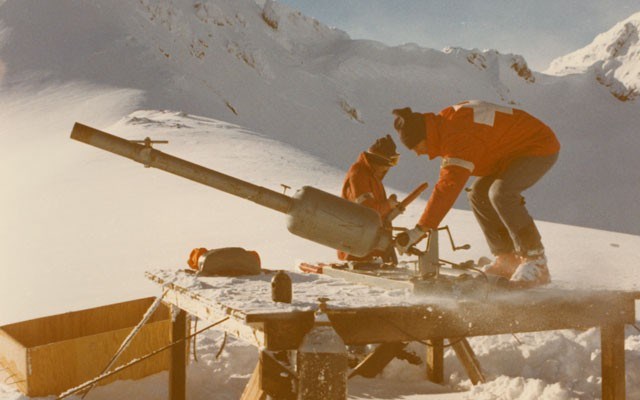Former ski patroller and municipal councillor Roger McCarthy admitted to getting a little worked up while watching Pro Patrol, a 1980 film that documented the early days of Whistler Mountain ski patrol.
"My pulse goes to 500," he said of a particular scene showing patrollers setting off a massive slide with an explosive charge dropped from a helicopter — a practice that was still in its infancy at mountains the world over.
McCarthy joined a packed crowd at the Whistler Museum Sunday, Dec. 7, at a screening of Curtis Petersen's award-winning documentary on the final day of the Whistler Film Festival.
Part cinéma vérité look at early mountain operations, part instructional video for a world full of ski noobs ("Skiers ski all over the mountain..." the narrator explains at one point), it's easy to get caught up in the nostalgia of Whistler's halcyon days so intimately depicted in the short film. But for patrollers like McCarthy who risked their own safety to evacuate injured skiers and maintain the mountain's runs, it was an eye-opening reminder of just how much has changed in the 35 years since the film was released.
"We went through a period of discovery on so many levels in those days," he said. "People were getting off the Peak Chair and accessing terrain where they didn't really know where they'd end up."
Petersen, who would go on to a long career in feature films, documentaries and music videos, made his first movie after he broke his leg while skiing the Whistler backcountry and was inspired to capture the daily lives of the patrollers who helped him.
"He realized the scope of what was being done on Whistler Mountain was quite significant," McCarthy added.
The resort's early ski patrollers were leading examples in many ways for other mountain operators, especially when it came to avalanche control, explained McCarthy, who worked in mountain safety on Whistler from 1974 to 1990.
"We sort of became the world leaders in 'avalaunchers' because in Europe and in the U.S. they were still using artillery," McCarthy said of the device used to propel explosives for avalanche control.
Whistler was also an early adopter of heli-bombing, which McCarthy admitted was what first hooked him on mountain safety.
"It really is the most fun you can have with your clothes on," he laughed.
With far fewer skiers on the mountain to compact snow, Whistler's early pro patrollers were responsible for containing much larger slides than today. Technological advances in ski design have also changed the way patrollers work, admitted McCarthy.
"All the stuff we did back then was on skinny skis. When I think about it, there was a reason my legs got so big," McCarthy said. "I don't know how come somebody wasn't a whole lot smarter back then when it came to skis."
With greater access at higher elevations and the evolving challenges associated with climate change, Whistler is still a hotspot for ski patrollers looking for a unique challenge, McCarthy explained.
"Whistler is a destination that a lot of ski patrol people want to work at because of the variety, the scale, the scope and the magnitude," he said. "It's very few people who come here from other places who understand the scale and scope and size of Whistler."




